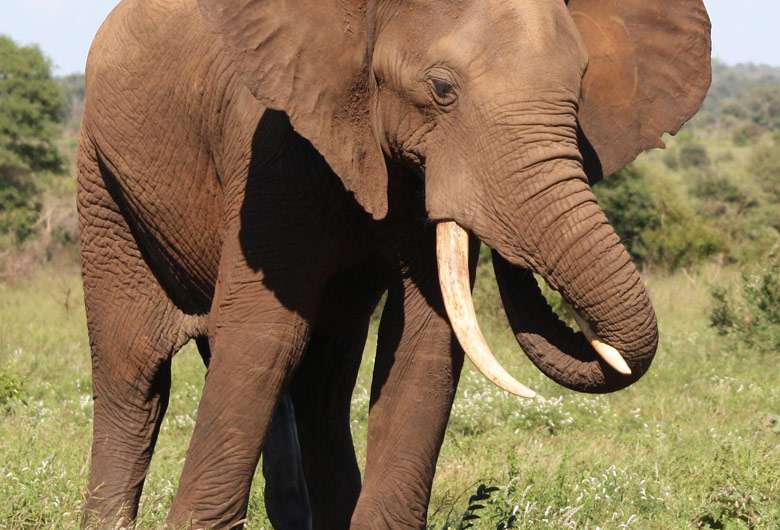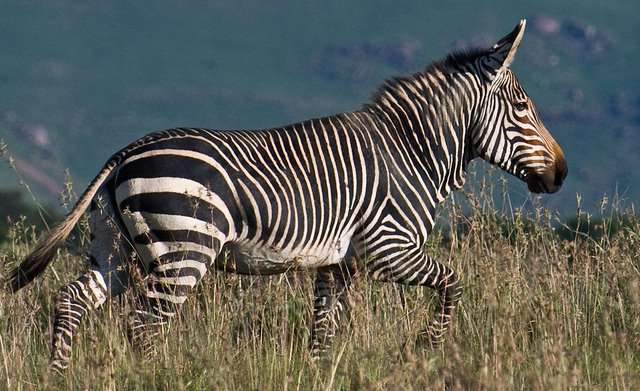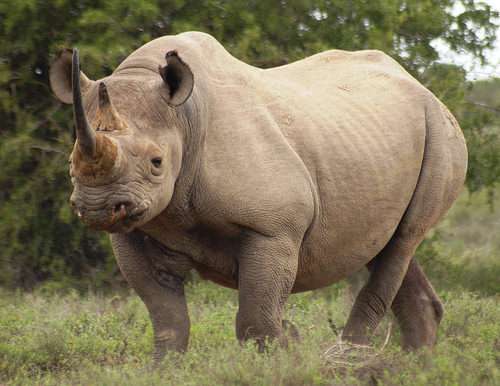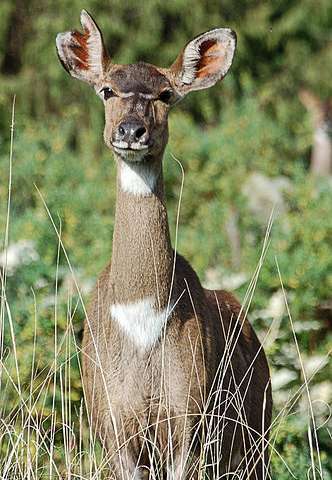Researcher imagines a world without large, plant-eating animals

Imagine the death of the world's last elephant.
An international team of ecologists, including Stanford biologist Rodolfo Dirzo, did just that, not only for elephants but for 73 other threatened large herbivores, ranging from bison and camels to tapirs and zebras. Their comprehensive analysis of data on these animals paints a stark picture:
- More frequent and intense wildfires due to a build-up of flammable plant matter no longer being eaten by the missing herbivores
- More habitat coverage for disease-carrying rodents
- Dwindling food for large carnivores such as lions and tigers
- Diminished seed dispersal for plants
"The ripple effects are profound and significant not only for ecosystems, but for humans too," said Dirzo, the Bing Professor in Environmental Science and a senior fellow at the Stanford Woods Institute for the Environment.
About 60 percent of large herbivores are threatened with extinction, and many face shrinking ranges. If the downward spiral continues, the result will be what the study's authors call an "empty landscape" – grasslands, savannahs, deserts and forests in which plants and small animals appear healthy and abundant, but the ecosystems are, in fact, shells of their former diverse vitality.
The analysis, led by William Ripple of Oregon State University, was published in Science Advances, the open-access online journal of Science magazine. The study looks at endangerment status, key threats and ecological consequences of population decline for herbivores weighing more than 220 pounds (100 kilograms) on average.

"Without radical intervention, large herbivores (and many smaller ones) will continue to disappear from numerous regions with enormous ecological, social and economic costs," the scientists wrote.
Ripple, Dirzo and their fellow researchers found that hunting (for meat and animal parts, such as rhino horns and elephant tusks,) habitat change and livestock pressures are the primary drivers of large herbivore population declines. To slow these destructive forces, the scientists recommend:
- Organizing a coordinated research effort focusing on threatened species in developing countries.
- Taking decisive policy actions to encourage and empower local communities in the management of protected areas through efforts such as sustainable tourism and education about the importance of large animals for disease regulation
- Engaging policymakers – and society at large – in national and international campaigns to stop destruction, degradation and over-exploitation of large herbivores' habitat.

There are about 4,000 known species of terrestrial herbivores, which live in a wide range of ecosystems on every continent except Antarctica. Of those, the highest numbers of threatened large herbivores live in developing countries, especially in Southeast Asia, India and Africa. Only one endangered large herbivore lives in Europe (the European bison), and none are in North America, which, the authors add, has "already lost most of its large mammals" through prehistoric hunting and habitat changes.
"The decline in the local abundance of large herbivores, the extinction of their populations in many areas of their distributional range and the risks of their global extinction represent a major pulse of erosion of the Earth's biodiversity," Dirzo said. "Hopefully, this kind of research can help us prevent the defaunation – the loss of animals from ecological communities – of the planet's remaining terrestrial large animals."
-

The threatened Eastern gorilla. Credit: Peter Stoe -

The threatened mountain nyala. Credit: Halszka Hrabar
More information: Science Advances, advances.sciencemag.org/content/1/4/e1400103
Journal information: Science Advances
Provided by Stanford University


















